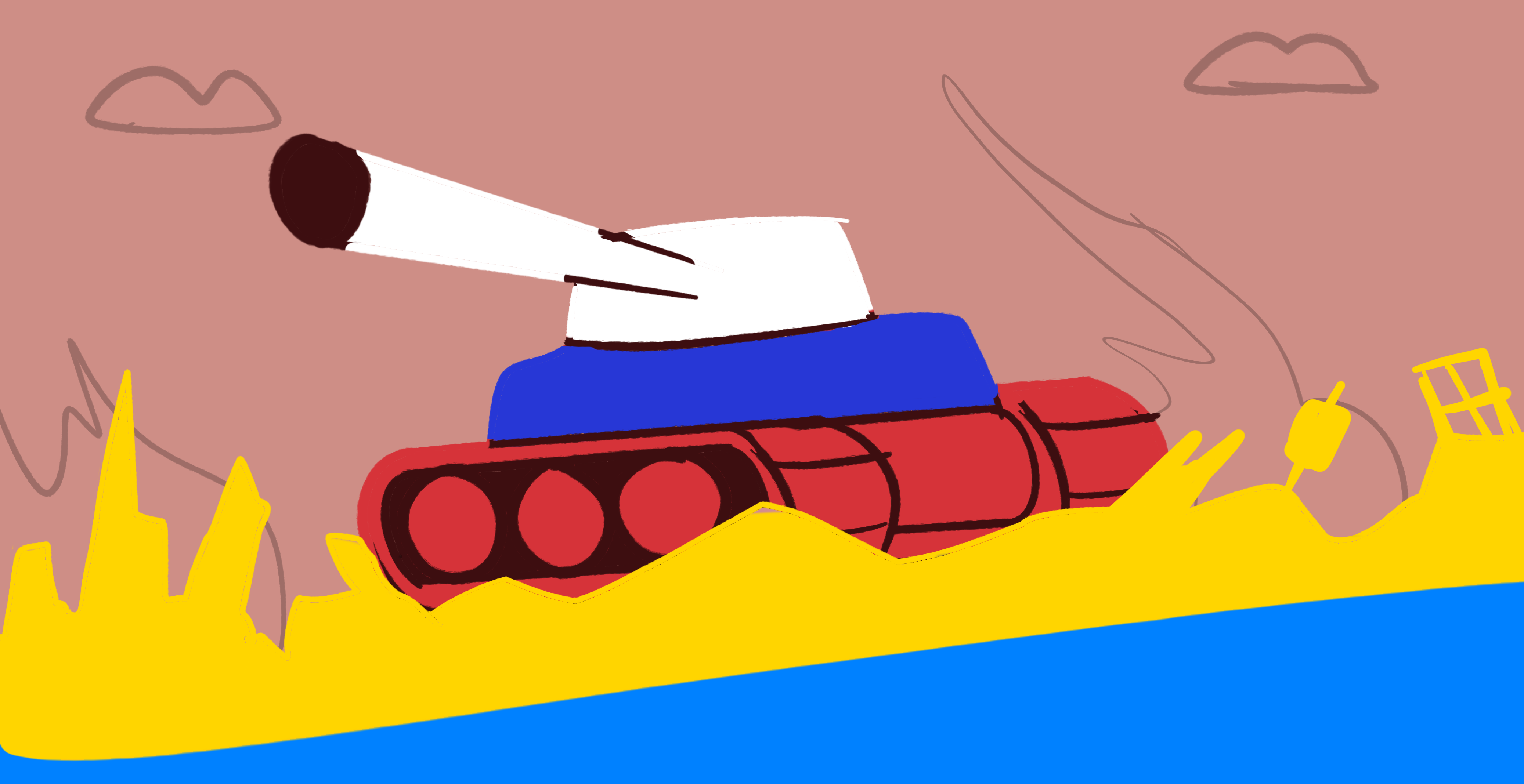
President Vladimir Putin’s invasion of Ukraine rages on for another week. Every day, both the battlefield and the geopolitical scene change significantly. Here is a recap of the latest news on the ground in Ukraine and the broader global context.
Russian gains ground at a cost:
Russian forces continue to bear down on Ukrainian cities with force, with the heaviest fighting in the eastern and southern portions of the country.
The large eastern city of Kharkiv remains in control of the Ukrainians despite heavy bombing by Russian forces.
Russia continues to seize many smaller towns in the south of Ukraine including the city of Enerhodar on Friday. This town is host to the largest nuclear power plant in Ukraine and is one of the southern region’s more strategically important cities.
Fighting intensifies in the south as Russian forces seek to control Ukraine’s Black Sea coast, an important military and financial point.
A convoy of Russian vehicles roughly 40-miles long has been heading inland to surround the Ukrainian capital of Kyiv. This convoy has caused a great deal of panic on both the global stage and for the citizens of Kyiv.
Sources reported on Thursday that the Russian army’s massive convoy was brought to a screeching halt due to a lack of resources. Russian vehicles are without fuel and Russian soldiers are going without food.
While the Russian military is vastly larger than the Ukrainian military, many logistical issues have marred this campaign’s first week.
The most crucial factor in Russia’s early shortcomings is a staunch defense from Ukraine’s military and people.
Officials within the Kremlin and Russian state media believed Ukraine would be taken over in a matter of days.
While the Russian military has met unexpected resistance, their own force’s issues have not helped their efforts.
The Russians have not been able to set up proper communications with all of their personnel. This element is a fundamental component of a successful military campaign.
Russian forces abandon tanks in the streets of Ukraine due to a lack of fuel, and early reports suggest that much of their machinery is rife with maintenance issues.
These factors all paint the picture of a military somewhat unprepared and who dramatically underestimated its foe.
This miscalculation has led to a significant death toll within the Russian army. On Thursday, the Russian Ministry of Defense said that 498 Russian soldiers have died in combat and 1597 soldiers have been wounded.
The Russian military has every motive to underplay these numbers. Unofficial outside reports have estimated three times what the Russian government is saying.
For context, Russia lost as many troops in the first week fighting Ukraine as the United States lost fighting Iraq in the first ten months. Russia lost 498 soldiers, and the U.S. lost 482 soldiers.
While the high death toll and early failures from the Russian military are good for the Ukrainians, it may also serve as the pretext for something far worse.
Putin wants to declare a victory in the conflict as quickly as possible. The longer the battle continues the more his reasons for entering Ukraine will be delegitimized in the eyes of the global community, but most importantly with his citizens and soldiers.
Putin invaded Ukraine under pretenses that he would be toppling a corrupt regime and the people would greet the Russians as liberators. Currently, through the use of information control and dogmatic thinking, a majority of the Russian population believes this. However, the longer the Ukrainians fight against their supposed liberators, the less Putin’s people will support his cause.
We have already seen how Putin reacts when a town or area does not roll over as quickly as he had hoped. Instead of being deterred, he escalates the firepower.
Cities that held off conventional Russian forces are now being targeted more and more by missiles and air raids.
Russia has come under fire for the suspected use of cluster bombs. This weapon is extremely effective at killing and maiming groups of people, and the Geneva conventions outlaws it.
Russia has also put its nuclear forces on maximum readiness, the equivalent to what we call DEFCON 1.
While nuclear war is still off the table, this escalation of force shows the length Russia will go in pursuit of its goals.
People in the international community and here in the U.S. are also not helping in ensuring tensions stay low.
The response to Russia at home:
Domestically, President Biden has stayed staunch in not involving United States troops in Ukraine, however, there is a sizable bipartisan push to escalate fighting against Putin.
Rep. Adam Kinzinger (R-IL) stated on Twitter that the U.S. needed to establish a no-fly zone over Ukraine. Former Secretary of State Hillary Clinton has echoed these desires and has urged the U.S. to conduct cyber attacks on Russian governmental institutions.
For reference, if the United States created a no-fly zone over Ukraine, it would allow U.S. troops to shoot down any Russian aircraft conducting operations over Ukraine.
Also, U.S. doctrine states if a critical infrastructure like energy or nuclear launch capabilities is shut down by a foreign cyberattack, it is considered an act of war. Russian doctrine is the same, if not easier, to provoke than ours.
Rep. Eric Swalwell (D-CA) told news outlets Russian students should be kicked out of American universities in retaliation towards Putin.
These sentiments marry with others within the government and the media who push for increased force on Russia and downplay Putin’s nuclear threat.
This stunning willingness for many in power to drag the world into a war, the likes of which haven’t been seen in 80 years, is still being resisted by the administration so far.
As the situation in Ukraine and the rest of the world develops, we will be sure to bring you the latest.
